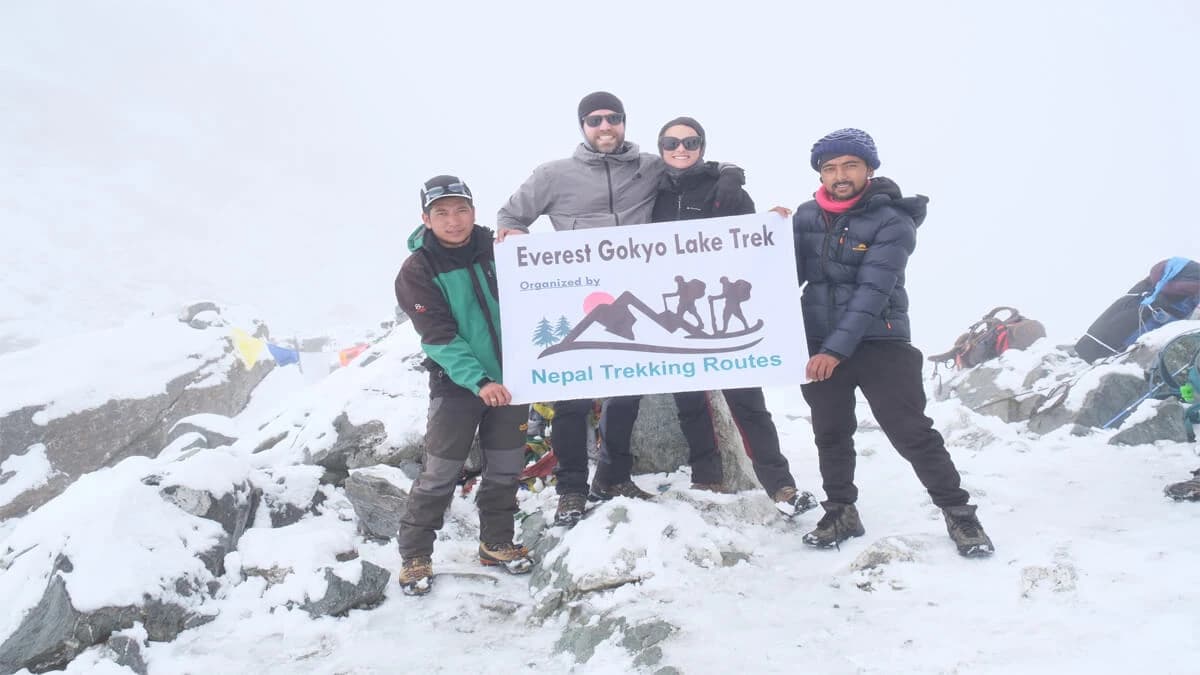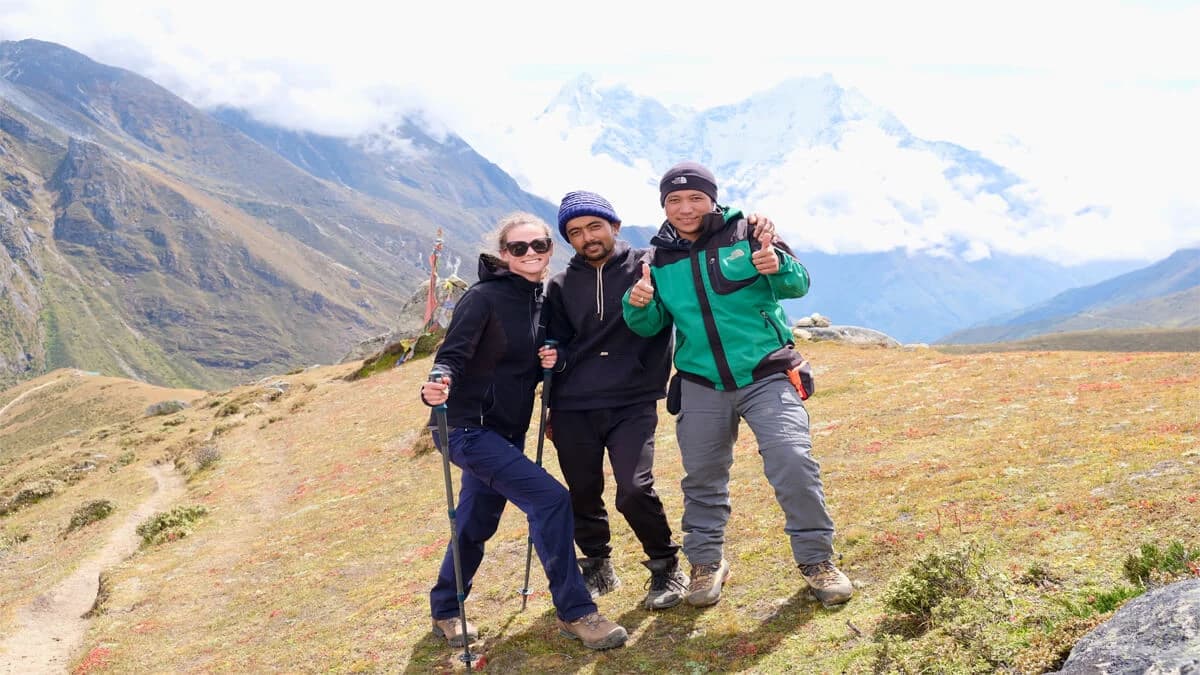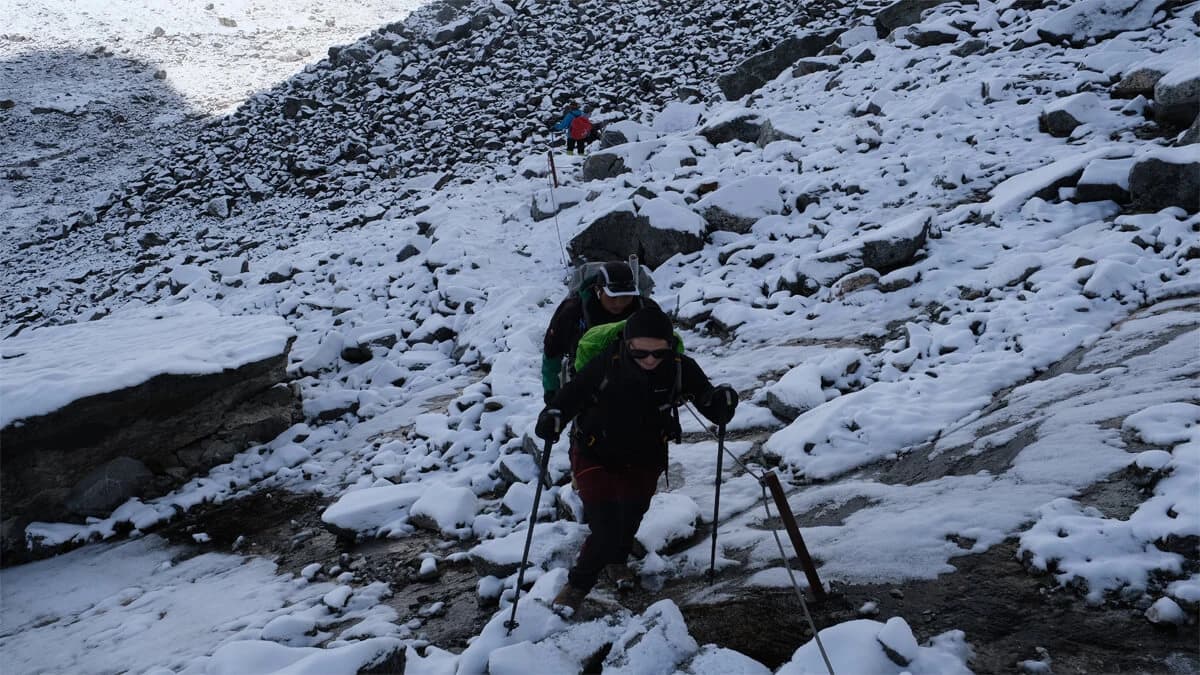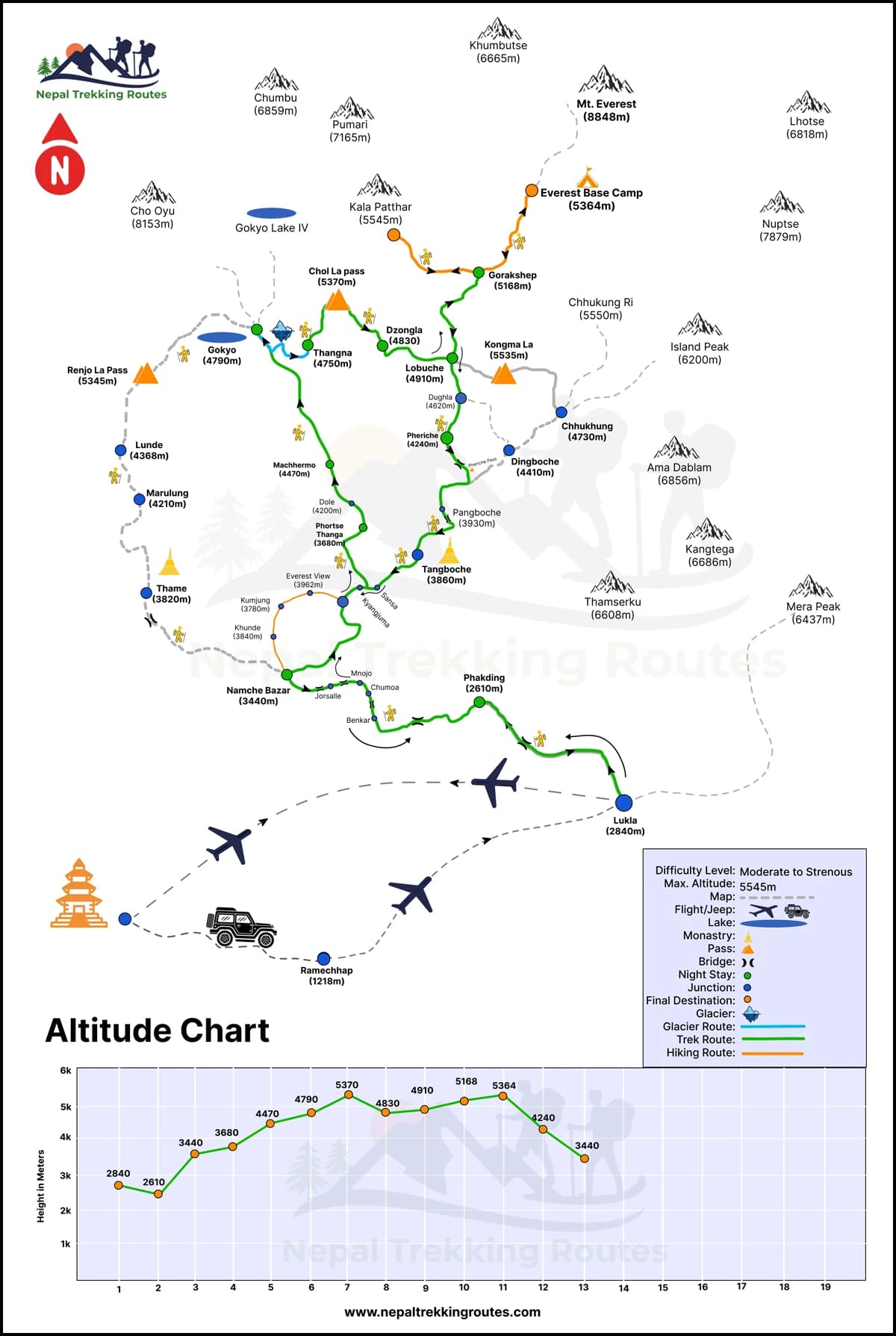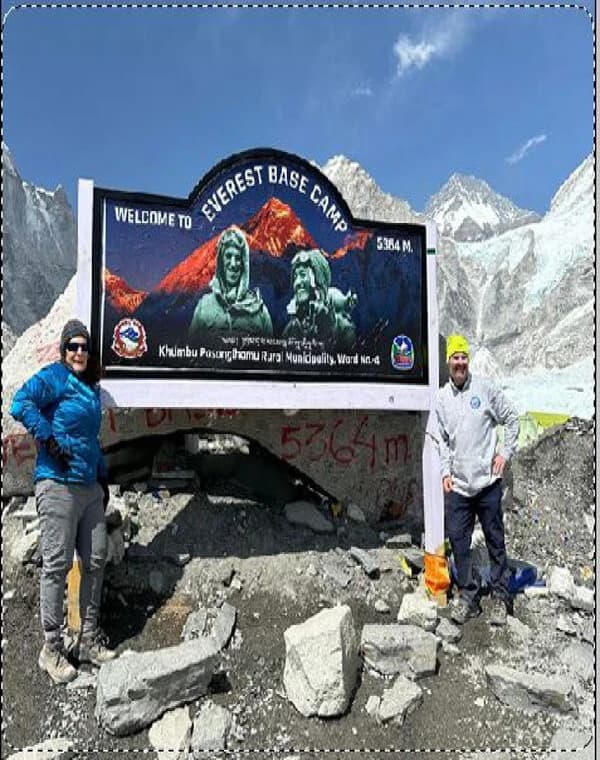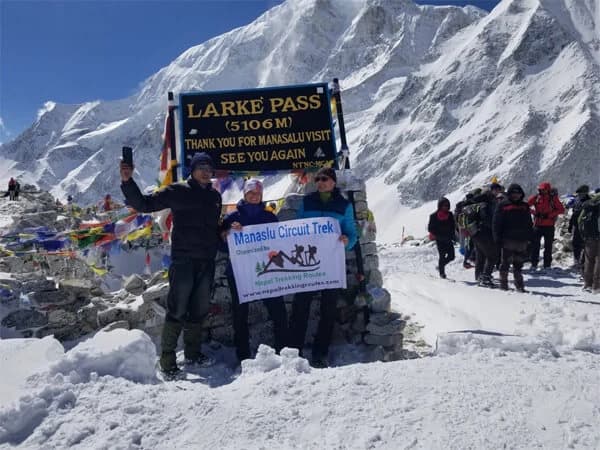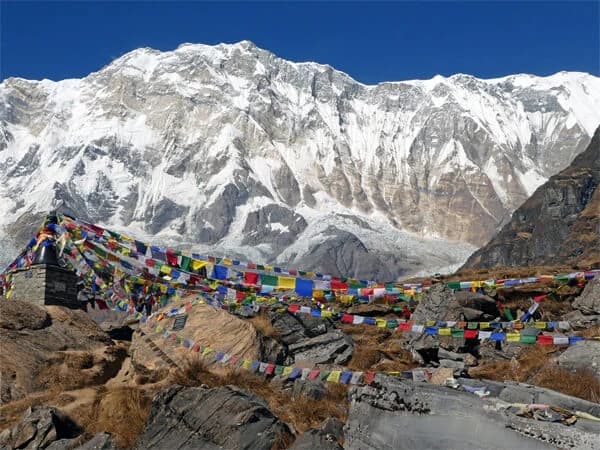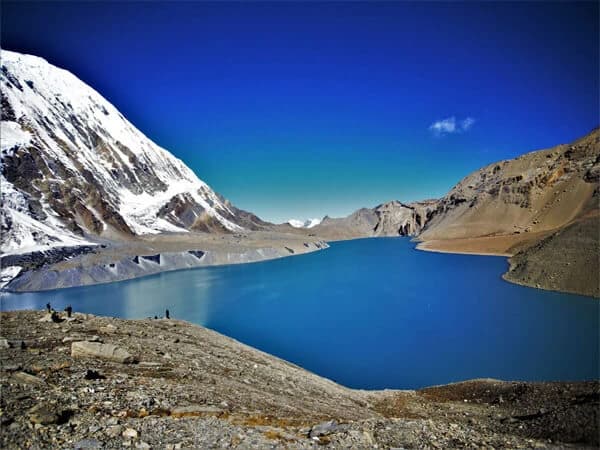Everest Gokyo Cho La Pass Trek Highlights
-
The Everest Gokyo Cho La Pass Trek is a popular trekking route in the Everest region of Nepal. It is a challenging trek that takes you through diverse landscapes, traditional villages, and stunning mountain views. Here are some of the highlights of the Gokyo Cho La Pass Trek.
- Gokyo Lakes: The Gokyo Lakes are a series of six glacial lakes that are situated at an altitude of 4,700-5,000 meters. The lakes are known for their crystal clear water and stunning turquoise color, which makes them a popular destination for trekkers. The trek offers breathtaking views of the Gokyo Lakes and the surrounding mountain ranges.
- Cho La Pass: The Cho La Pass is a high mountain pass at an altitude of 5,420 meters. The pass offers stunning views of the surrounding mountain ranges, including Mt. Everest, Lhotse, and Nuptse. Crossing the Cho La Pass is one of the highlights of the trek, but it is a challenging and steep climb.
- Kala Patthar: Kala Patthar is a small peak at an altitude of 5,545 meters. It is one of the best viewpoints in the region and offers panoramic views of the Himalayas, including Mt. Everest, Lhotse, and Nuptse. The trek takes you to the top of Kala Patthar, where you can enjoy the sunrise and sunset views.
- Traditional Sherpa Villages: The trek takes you through traditional Sherpa villages, where you can experience the local culture and way of life. You’ll pass through Namche Bazaar, the Sherpa capital, and other small villages like Dole, Machhermo, and Gokyo.
- Everest Base Camp: The trek also takes you to Everest Base Camp, which is at an altitude of 5,364 meters. This is the starting point for climbers who attempt to summit Mt. Everest. The trek offers stunning views of the Khumbu Icefall and the surrounding mountain ranges.
Trekking in Everest region with Cho La Pass
Do you want to have a different experience from the Everest Base Camp trek? Do you want to add some challenge to your Everest region trek? If ‘yes’, the Everest Gokyo Cho La Pass Trek is the ultimate package. This trek takes you to the base camp of Mount Everest. Besides, you can the heavenly Gokyo Lakes and Cho La Pass Trek. Cho La Pass (5,420 m) is one of the three high passes of the Khumbu region.
Gokyo Valley is popular for Gokyo Lakes, Gokyo Village, and Gokyo Ri (5,357 m). Gokyo Lakes are a group of six turquoise-watered lakes interconnected naturally. Other 19 glacial lakes of various sizes and shapes are also connected to this network. Gokyo Village is one of the largest settlement areas of the valley. It is popular for the friendly Sherpa people, their lifestyle, culture, tradition, and cuisines served at the best hospitality. You can visit the village and talk with the people to get first-hand experience about their community.
Sagarmatha National Park and the Sherpa socio-cultural aspects are the usual rewards of the Everest Base Camp trek. A hike to Everest View Hotel is another prize of the Everest Gokyo Cho La Pass trek. Ancient monasteries, chortens and mani walls are also common features of this region. These Tibetan Buddhist shrines are highly decorated by colorful prayer flags and wheels. The feasts and festivals celebrated on regular intervals are also other beauties of Everest region trek.
How is Everest Gokyo Cho La Pass trek different from Everest Base Camp trek?
Both the treks are variants of Everest region trekking. The trekkers can have lifelong experiences of the natural and cultural wonders of this region. The snow-capped peaks, lush forests flora and fauna are the natural aspects. The man-made landmarks found in the Everest region fall under cultural characteristics. The monasteries, chortens, and mani walls built in every village have further beautified them. Similarly, Everest View Hotel is another significant man-made site worthy of visiting.
Everest Base Camp trek takes you to the base camp of the world’s highest peak. You follow the traditional routes along Sagarmatha National Park. You go past the Sherpa ethnic villages of this region. Apart from this, the Everest Gokyo Trek is a little deviation from the EBC trek. It takes you to Chhukung Valley and Gokyo Valley away from the Dudh Koshi River Valley. Crossing Cho La Pass (5,420 m) is an adventurous trekking in Nepal.
While doing the EBC trek, you get to visit two vantage points of the Everest region. Everest View Hotel and Kalapatthar are the viewpoints you reach in this trek. Everest View Hotel is the highest-altitude hotel in the world. Kalapatthar is the world’s highest place you can climb without a special permit. The Gokyo Cho La Pass trek takes you to other two vantage points. Gokyo Ri (5,357 m) rewards you with the best view of the Great Himalayas, Gokyo Lakes, and Gokyo Valley. You can also have the view of four eight-thousanders of Everest and Makalu region.
Cho La Pass is one of the three high passes of Everest Three High Passes trek. The scenery from Gokyo Ri and Cho La Pass are almost the same. Mt. Everest (8,848 m), Mt. Lhotse (8,516 m), Mt. Makalu (8,481 m), Mt. Cho Oyu (8,188 m) and many more are seen from here.
Is Gokyo Cho La Pass Trekking difficult?
Cho La Pass Trek Nepal combines a high Himalayan pass above 5,000 m. Cho La Pass (5,420 m) is one of the three high passes of the Khumbu region. This high pass adds up to the difficulty of this trek. The final section of the pass is almost always covered with a thick layer of snow. The snow makes the trail more slippery to walk along. More than that, in winter, you should use the climbing gears to cross it. Gokyo Cho La Pass Trek for beginners is considered difficult.
The traditional trekking trail of EBC trek is well maintained and defined. So, it is not very difficult to reach the base camp of Mount Everest throughout the year. The Gokyo Cho La Pass trek difficulty is a little challenging due to the high pass. Moreover, you have to walk for about 6/7 hours per day above 3,000 m. As soon as you walk above 2,500 m, there is always a chance for Acute Mountain Sickness (AMS). You need to be more cautious to avoid such health hazards.
Everest Gokyo Cho La Pass trek guide
To begin the Everest Gokyo Cho La Pass trek, you must fly from Kathmandu to Lukla. It takes around 30 minutes to reach Lukla, the gateway to the Everest Base Camp trek. Then, you move further to Phakding, Namche, Tengboche and Dingboche. By leaving the usual EBC trekking trail, you divert towards Chhukung Valley. Then, following the rugged trail and enjoying the glorious Himalayan views, you enter into Gokyo Lakes Valley. You spend a day in this valley to climb Gokyo Ri (5,357m) and Gokyo Lakes.
How to reach Cho La Pass? Well, after Gokyo Valley, you will trek towards Thagnak then reach Cho La Pass. You cross the Cho La Pass and move towards Dzongla.
Next, you trek to Lobuche and then move towards Gorakshep to spend a night. On the first day, you visit Everest Base Camp (5,364 m). The following morning, you hike to Kalapatthar, the best vantage point. Afterwards, you descend to Namche, Lukla and then fly back to Kathmandu. The flight to and from Lukla gives you the best aerial view of the Everest region. The snow-covered mountains, lush valleys, dense forests and high-altitude villages are also seen.
Alternative Everest Gokyo Cho La Pass Route
Everest Gokyo Cho La Pass trek is designed to help you experience something different. It is to equip the EBC trek with more interesting things to make it more memorable. It guides you through the Dudh Koshi Valley, Chhukung Valley, and Gokyo Valley respectively. You have a choice to visit Gokyo Valley after completing the Everest Base Camp trek. For this, you reach EBC by walking through the regular track. After relishing the breathtaking view of the Mountain Giants, you trek down towards Gorakshep.
Then, you climb down to Dzongla and then Thangna via Cho La Pass (5,420 m). From Thangna, you walk up to Gokyo Valley to spend a day there. After visiting the Gokyo Lakes and Gokyo Ri, you climb down towards Dole, Namche, and Lukla. In the end, you fly back to Kathmandu by leaving the Everest region behind.
The Best Time to trek Gokyo Cho La Pass
You can do the Everest Gokyo Cho La Pass trek in all seasons. However, if it snows heavily, the trail across Cho La Pass remains blocked. It is almost impossible to clear 8/10 feet thick snow layers. The best time for the Cho La Pass trek is spring and autumn. In these seasons, the days are fine with clear skies. While crossing the high pass, you can have the best vistas of the mountains and landscapes.
Although the weather is not predictable in summer, the visibility is clear. You can have the best rewards of the natural and cultural beauties from the vantage points. Gokyo Ri, Cho La Pass, Everest View Hotel, and Kalapatthar are the remarkable viewpoints of the Everest region. Doing this trek in winter is quite difficult. The temperature of this high Himalayan place goes far below zero. The heavy snowfalls obstruct the journey by blocking the Nepal trekking trails. If you visit this region in spring, the rhododendron flowers embellish the entire Sagarmatha National Park.
Everest Gokyo Cho La Pass trekking itinerary customization
Cho La Pass Everest trek itinerary can be customized according to your preferences. The 18 day itinerary can be shortened by skipping some routes or Cho La Pass. It also can be extended adding Three High Passes. It depends whether you are physically fit for longer trek. For beginners, it is recommended to hire a guide.
Nepal Trekking Routes offer Gokyo Cho La Pass 14 day itinerary for those with limited time. It starts with Lukla flight, followed by trekking through Namche Bazaar, Dole, Machhermo to Gokyo Lakes. After hiking Gokyo Ri, you will cross the challenging Cho La Pass and move towards Dzongla, Lobuche and Everest Base Camp.Then, you will return back to Namche.

